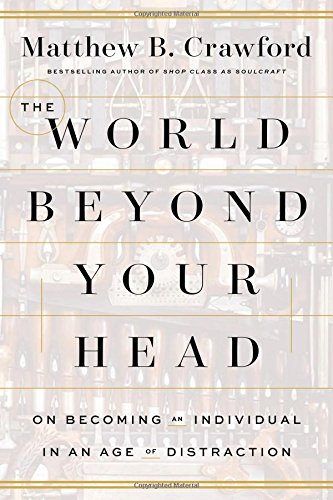
Jesse Barron

IN HIS 1980 ESSAY ON THE AMERICAN SCENE, “Within the Context of No Context,” George W. S. Trow supplies an anecdote from Harvard in the early 1960s. During an art history class on the Dutch masters, a Black student described Rembrandt as “‘belonging’ to the white students in the room.” The white students totally agreed with this. “They acknowledged that they were at one with Rembrandt,” Trow writes. “They acknowledged their dominance. They offered to discuss, at any length, their inherited power to oppress.” 
IN HIS AUTHORIZED BIOGRAPHY, Steve Jobs explains how he chose the name Apple. In 1975, Jobs was working weekends pruning Gravenstein apple trees at an orchard near Salem, Oregon. A Swiss millionaire owned the land, but he had entrusted the cider operations to his nephew, a Hare Krishna hippie who had recently served two years in Virginia for possessing 24,000 tablets of LSD. Jobs liked the hippie, the orchard, and the fruit. He liked the way the word “apple” sounded—fun and unintimidating. “Apple took the edge off the word ‘computer,’” Jobs told his biographer, Walter Isaacson: it balanced something industrial 
The mood, when a story about Edward Snowden begins any time before the news-breaking Guardian piece of June 5, 2013, is a clean dramatic irony. We know the identity of the anonymous source; the characters don’t. The greatest secret-exposer of his generation was himself an unexposed secret that winter and spring, a cipher who insinuated his way into journalists’ lives through encrypted channels, making vague and terrifying claims that were hard to grasp and verify. He could be a liar or a catfisher. It could be a sting; you’d spend the rest of your life in jail. 
Heike Geissler, the German novelist and translator, ran out of money in the winter of 2010 and took a temporary job at an Amazon warehouse in Leipzig to support her two children. As she tells us in the opening pages of her book about that experience, she was not intending to write a book about that experience. But intention is one thing and canniness another; a real writer’s canniness never deserts her. “Though the work was physically and mentally exhausting,” her translator explains, Geissler “managed to take notes on Post-its” during her six weeks at the warehouse, and write more 
Country fans no longer resemble the characters in country songs; they are salaried accountants chewing Nicorette in Chevy Tahoes, not railroad linemen spitting Copenhagen through the shot-out windows of a Ford F-150. Their assimilation worries them, and they sometimes overcompensate. “If any of you tuned in to ABC tonight expecting to see the new show Black-ish,” said host Brad Paisley at the 2014 Country Music Association Awards, referring to the sitcom about assimilation anxiety in the suburbs, “this ain’t it. In the meantime, I hope y’all are enjoying white-ish.” The joke had another meaning, too, which Paisley probably didn’t intend: 
Cody Wilson was a twenty-four-year-old law student when in early 2012 he realized he could unite his two strong interests, open-source software and the right to bear arms. By distributing digital blueprints for a handgun, he and his friends would allow anyone with a 3-D printer to manufacture his own “Wiki Weapon.” As soon as he conceives it, Wilson imagines himself on the news. “And now we turn to another story, seemingly out of the pages of science fiction,” he fantasizes. “Three-dimensional printable guns, made at home.” 
A generation gap divides readers of the New York Times. On one side, it’s the publisher of the Pentagon Papers, the first draft of history, the indispensable source. On the other side, the Pentagon Papers do not define the Times at all; failure to publish the Edward Snowden papers does. If you were a teenager on 9/11, the Times introduced itself to you with news of WMDs. A couple years later, it confirmed your ill impression by dousing the fuse on its own domestic-wiretapping story—ready to publish in the fall of 2004—until after Election Day, removing a major obstacle to 
In 2010, when houses and jobs and retirement accounts were vanishing in a vapor of financial abstraction, Matthew B. Crawford’s Shop Class as Soulcraft, a book about the pleasures of skilled manual labor, seemed more epochal than he’d probably anticipated. It pled a straight and lucid case: In our obsession with the “knowledge economy” we denigrate the trades, but the trades instill their own kind of knowledge, teaching reverence for the physical world. A motorcycle mechanic with a Ph.D. in philosophy, Crawford appeared in the New York Times wearing rolled-up sleeves and looking uncannily like Dominic West. One hundred and 
All artists steal, but some art makes a subject of the theft. In the early 1980s, Sherrie Levine tore twenty pages from a book of watercolors by J. M. W. Turner, signed them, framed them, and showed them in a London gallery. Levine’s earlier series, “After Walker Evans,” which resides in the permanent collection of the Metropolitan Museum of Art, consists of copies of prints made from Evans’s negatives. It comes down to medium and quantity; you start with materials that are worthless and easily obtainable, and you end with something solid, scarce, signed. Put another way, you could not 
Alfred Hitchcock’s definition of suspense—a bomb under a table that the audience can see but the people sitting there cannot—more or less describes the feeling of reading Democratic political theory from the middle of 2015 until approximately 8 p.m. on the evening of last November 8. It’s not only that Democrats were hoping for a Clinton presidency; it was Delphic. A result came preordained. This certainty now constitutes one of the mysteries of the election: How, running such a compromised candidate, did the losers know they’d win?